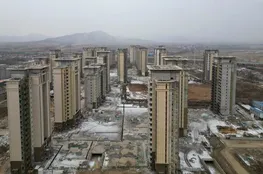China's economy has faced further deterioration in the third quarter, reflecting struggling efforts to invigorate its sluggish growth trajectory. The nation's Gross Domestic Product (GDP) increased by 4.6% year-on-year, falling short of the government's ambitious target of 5% annual growth. This figure, released by China's National Bureau of Statistics, does suggest a slight improvement over previous expectations, with supplementary data on retail sales and industrial output also surpassing forecasts. Despite these marginal gains, concerns persist as this marks the second consecutive quarter where economic expansion has failed to meet the government's benchmarks, raising alarms about the overall growth strategy.
Recent strategic interventions by Beijing have attempted to address this downturn. Chinese authorities have unveiled a series of initiatives designed to stimulate economic momentum. Most notably, China's central bank, the People's Bank of China (PBOC), has taken decisive action by spearheading the nation's most extensive stimulus effort since the onset of the pandemic. These measures encompass substantial reductions in interest and mortgage rates, as well as targeted assistance to revitalize the tepid stock market. In addition, the Ministry of Finance, alongside other governmental agencies, has mobilized further support mechanisms aimed at enhancing economic advancement and ensuring financial stabilization.
Among the challenges confronting the world's second-largest economy are a persistent property market crisis coupled with weakened consumer and business confidence. These difficulties complicate the government's efforts to shepherd economic recovery. According to Eswar Prasad, former head of the IMF's China division, the likelihood of meeting the annual growth target appears increasingly uncertain. Prasad suggests that a significant, stimulus-driven acceleration would be essential in the fourth quarter to ameliorate these trends and achieve desired growth rates.
The central bank has also emphasized the need for heightened lending, urging banks and other financial entities to expand their credit support. This, in conjunction with the strategic reductions in borrowing costs, aims to invigorate investment and consumer spending, pivotal facets for sustaining economic vitality. As governmental bodies continue to forge new strategies, the effectiveness of these encouragements will be essential in revitalizing confidence and overcoming the multifaceted challenges currently stifling China's economic expansion.
























